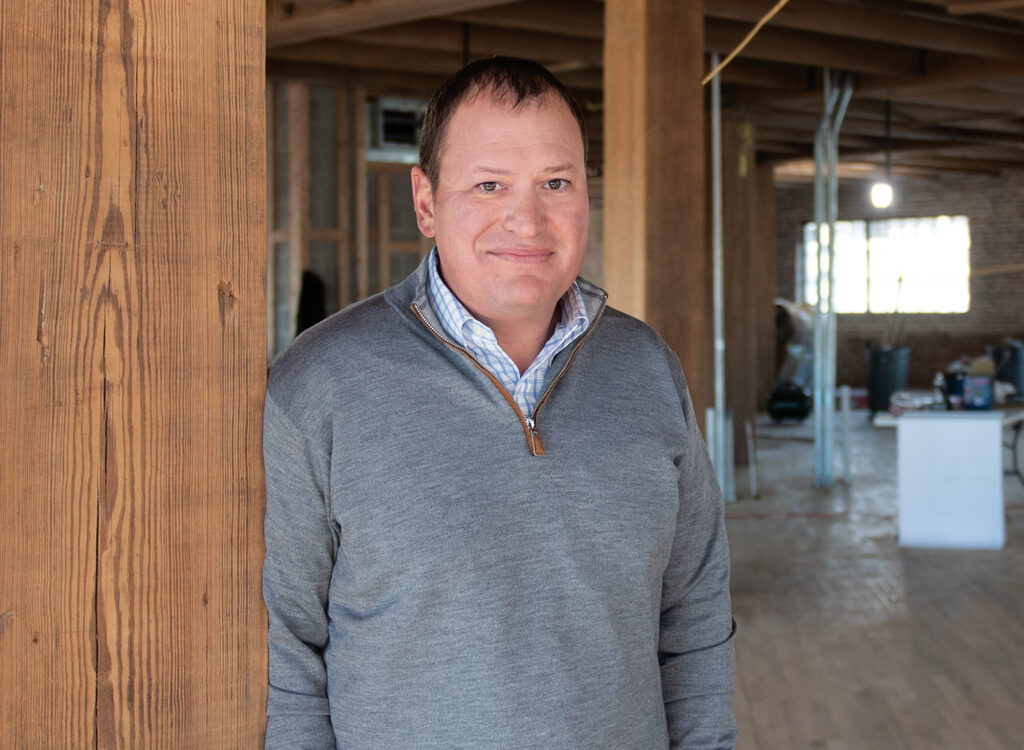The value of a small white building on Woodland Avenue
The building is where some got their first haircut; others learned to love jazz

Kathy A. Bolten Feb 24, 2023 | 6:00 am
3 min read time
763 wordsBusiness Record Insider, Real Estate and DevelopmentFor more than a century, a small, white wood-framed building in the 2500 block of Woodland Avenue was the pulse of the Woodland Heights neighborhood, first as a grocery store and then as a barbershop owned by two brothers.
The barbershop was shuttered about seven years ago, and since then the tired-looking structure has sat unused.
Polk County acquired the property in mid-2020 after its previous owners failed to pay property taxes on the parcel. Two years later, the county invited parties interested in acquiring the property to submit sealed bids.
In December, Steve Wilke-Shapiro, an architect who specializes in historic preservations and adaptive reuses of older buildings, became the owner of the property at 2513 Woodland Ave.
“This felt like the right opportunity to actually live what we do,” said Wilke-Shapiro, who acquired the property for $4,000.
Wilke-Shapiro plans to relocate his architect firm, Sequel Architecture, in the building after it is renovated.
One of the first things Wilke-Shapiro did after acquiring the property was submit an application requesting that it be designated a local landmark. The Landmark Review Board and the Plan and Zoning Commission approved the request at meetings in early February. The City Council was expected to approve the request at its Feb. 20 meeting (held after the Business Record was printed).
Among other things, landmark status is given to structures and locations that are associated with important events and people from the past and those that contributed culturally to an era.
The Woodland Avenue property did both, Wilke-Shapiro said.
“Old buildings have value not only because of their architecture and the work that went into building them, but also because they are where the important things that happen in our lives occurred,” Wilke-Shapiro said. “There’s an intangible value to them that becomes an important part of the story of the city. That’s what we’re finding with this building.”
The city of Des Moines posted information about the move to have the property designated as a local landmark. One person commented that they used to take empty pop bottles to the grocery store and trade them for candy. Another wrote that the barbershop is where their son got his first haircut. Still another wrote about practicing in a band in the basement of the building.
“The more people hear about this project, the more I see how people are connected to the building,” Wilke-Shapiro said.
The 685-square-foot building was constructed around 1915 near a streetcar line. The property was sold in the early 1920s to Hellen Wilkin, who owned and operated the store until the mid-1920s, according to information provided to the city board and commission. Wilkin sold the property to Neal Landess, whose family operated the store until 1968 when it was sold to Harlan and William Thomas.
Harlan’s Barber Shop “became an important gathering place for members of the Black community displaced by the [Interstate Highway 235] construction and nearby Urban Renewal projects which destroyed the once vibrant Center Street neighborhood,” according to information provided to the city boards.
In 1940, 1.9% of the residents who lived in the Woodland Heights area were Black, according to city information. By 1970, nearly 52% of the neighborhood’s residents were Black, many of whom moved to the area after their homes were torn down to make way for the interstate and other developments.
The Thomas brothers, who were Black, helped foster a gathering place in their barbershop for other Black people who lived in the area. The shop also became a place where jazz and blues music groups practiced or were taught how to play an instrument.
Harlan Thomas, who was inducted into the Iowa Blues Hall of Fame in 1999, “was a fixture in the jazz and blues music scene on Center Street as a member of the Soul Brothers band,” according to city information. “His involvement in the music community turned Harlan’s Barber Shop into a hub for people interested in playing, learning, and listening to these music genres.”
Wilke-Shapiro plans on paying homage to the grocery store and barbershop by hanging historical photos and other memorabilia on a wall in the building. In addition, at least one of the chairs used in the barbershop will be reinstalled. Wood paneling that was removed from interior walls will be reused as wainscoting, he said.
“We’re going to use the materials to tell the story of the building,” said Wilke-Shapiro, who estimated it will cost about $120,000 to renovate the building.
The renovation is expected to be completed by the end of the summer, he said.

Kathy A. Bolten
Kathy A. Bolten is a senior staff writer at Business Record. She covers real estate and development, workforce development, education, banking and finance, and housing.













